
2025 Summer Vol.77

━ First Exhibition ━
《Taegeukgi: The Days We've Shared Together》
A Special Exhibition Commemorating the 80th Anniversary of Liberation
The Taegeukgi is both a national symbol of the Republic of Korea and an emotional bridge that unites us as one people. For more than 140 years since it was officially declared as the national flag, the Taegeukgi has stood witness to the history we have built together and the passage of time itself. Our moments of joy and sorrow, suffering and triumph have all been shared through the Taegeukgi, and it is these collective memories and emotions that naturally lead us to embrace it as our symbol.
Eighty Years of Liberation and the Taegeukgi
To commemorate the 80th anniversary of Korea's liberation, the National Museum of Korean Contemporary History presents the special exhibition 《Taegeukgi: The Days We've Shared Together》 from August 8 through November 16. This exhibition introduces various stories surrounding the Taegeukgi, which has accompanied us throughout our journey, even amid the turbulent waves of history.
The Birth of a Modern Nation and the Taegeukgi
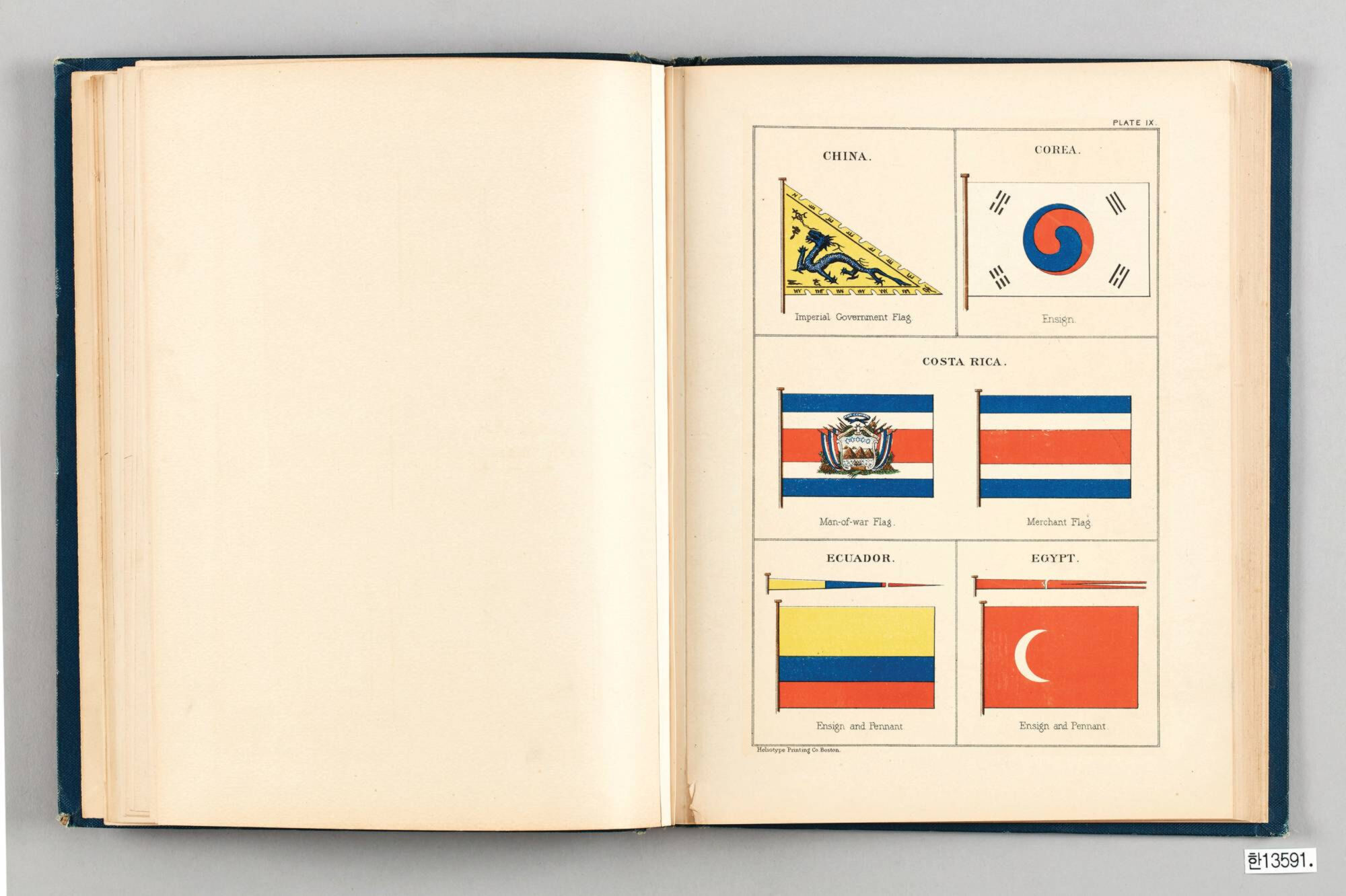 ▲ “Flags of Maritime Nations,” Collection of the National Museum of Korean Contemporary History.
▲ “Flags of Maritime Nations,” Collection of the National Museum of Korean Contemporary History.
 ▲ “Sinchuk Jinchando Folding Screen” featuring the Taegeukgi, Collection of the National Palace Museum of Korea.
▲ “Sinchuk Jinchando Folding Screen” featuring the Taegeukgi, Collection of the National Palace Museum of Korea.
In 1883, Joseon officially proclaimed the Taegeukgi as its national flag. According to records in the Annals of King Gojong, the Office for Foreign Affairs(Tongni Gyoseop Tongsang Samu amun) petitioned for this designation, and King Gojong gave his approval. The appearance of the early Taegeukgi used at that time can be seen in Flags of Maritime Nations, published by the U.S. Navy Department in 1882. The Taegeukgi was used in spaces representing the nation, such as venues for signing commercial treaties with countries worldwide and at international expositions. Even while caught between the great powers, Joseon and the Korean Empire sought to demonstrate their will as an independent nation through diplomacy. In this context, the Taegeukgi was a visual symbol announcing Korea's distinct identity to the international community. Domestically, the Taegeukgi gradually spread as a symbol representing Korea, appearing at state ceremonies, various assemblies, and in publications.
Holding onto Hope for Independence
 ▲ “Shanghai Edition of The Independent Newspaper (March 1, 1920 issue)” featuring the full text of the March 1st Independence Declaration alongside the Taegeukgi, Collection of the National Museum of Korean Contemporary History.
▲ “Shanghai Edition of The Independent Newspaper (March 1, 1920 issue)” featuring the full text of the March 1st Independence Declaration alongside the Taegeukgi, Collection of the National Museum of Korean Contemporary History.
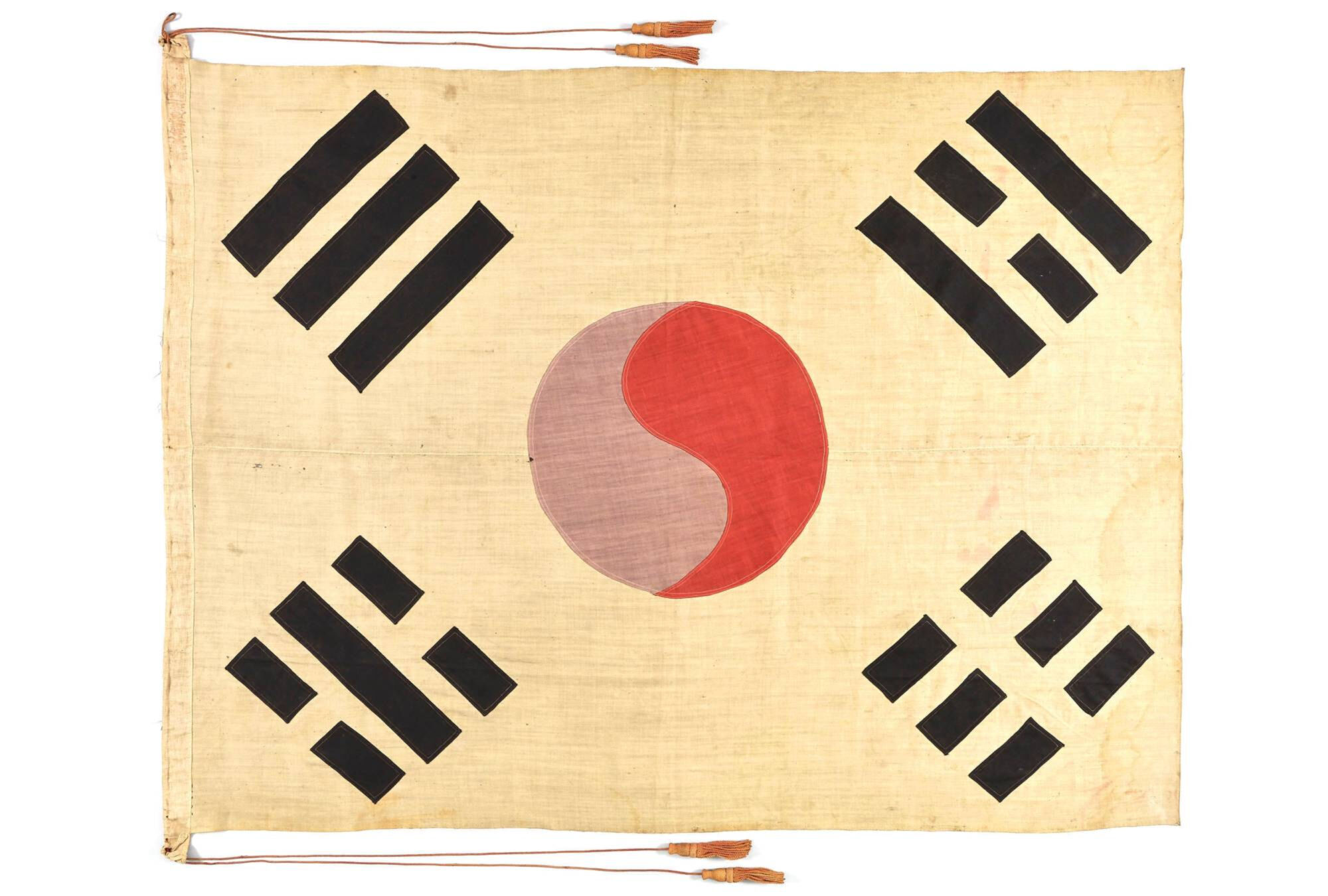 ▲ “Taegeukgi of the Provisional Parliament of the Republic of Korea,” Collection of the National Museum of Korean Contemporary History.
▲ “Taegeukgi of the Provisional Parliament of the Republic of Korea,” Collection of the National Museum of Korean Contemporary History.
In 1910, with the loss of national sovereignty, the use of the Taegeukgi was also prohibited. However, those who refused to abandon hope sought to preserve the Taegeukgi while awaiting the day of liberation that would surely come. They hid the flag out of sight of the eyes of Japanese imperialism, in the depths of their homes, in Buddhist altar spaces in temples, and close to their hearts. The March 1st Movement of 1919 rekindled the flame of independence, and all voices calling for freedom were conveyed with the Taegeukgi. With the arrival of liberation on August 15, 1945, Taegeukgi flags were raised once again throughout the nation, and flags scattered around various locations returned to their rightful place. The Taegeukgi used by the Provisional Parliament of the Republic of Korea, flags seized by Japan, and the Taegeukgi with King Gojong's earnest wishes all found their way back to us.
Hearts Inscribed on a White Canvas
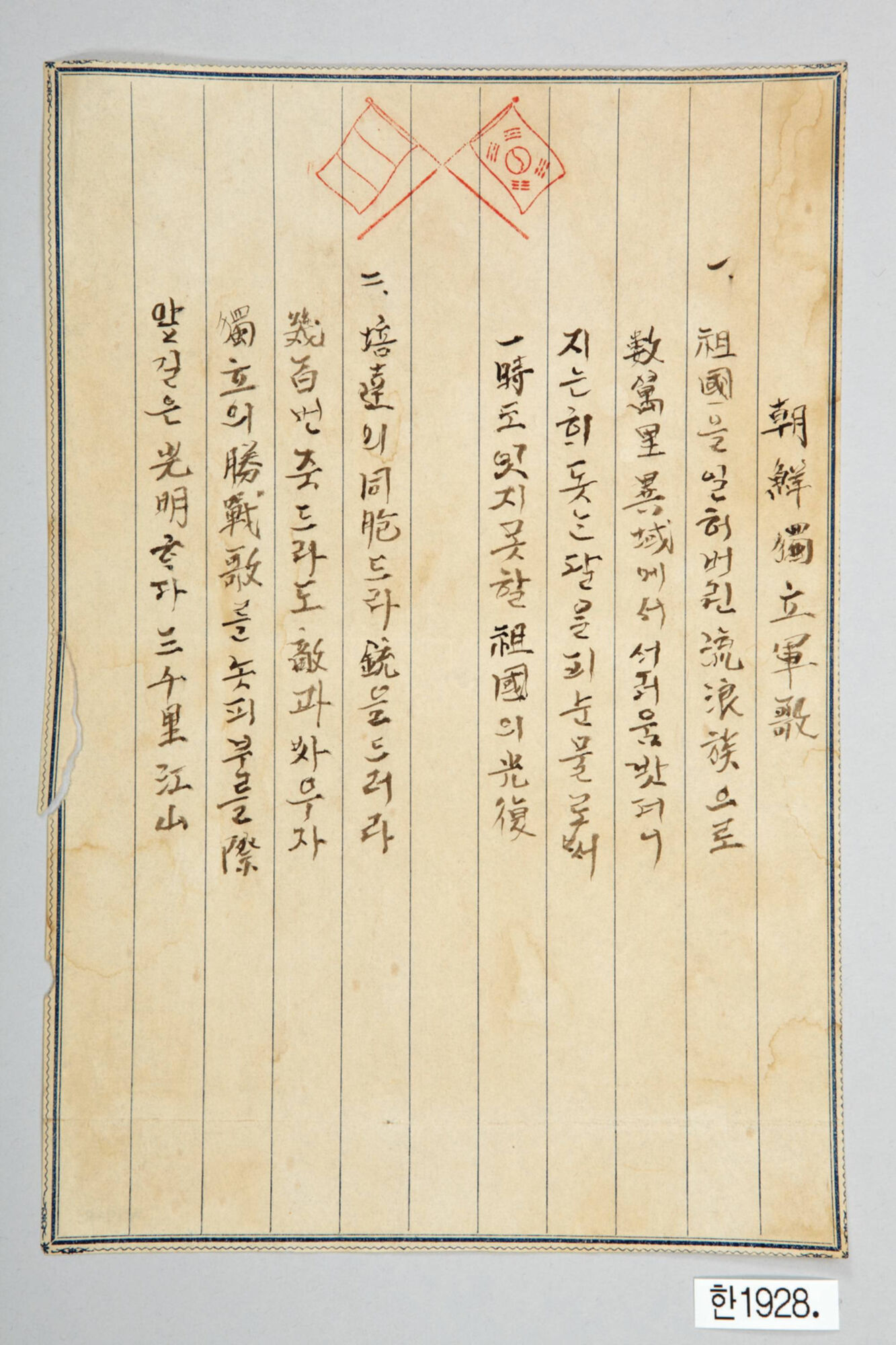 ▲ “Korean Independence Army Song” featuring the Taegeukgi, Collection of the National Museum of Korean Contemporary History.
▲ “Korean Independence Army Song” featuring the Taegeukgi, Collection of the National Museum of Korean Contemporary History.
 ▲ “Taegeukgi of Perpetual Military Fortune,” Collection of the National Museum of Korean Contemporary History.
▲ “Taegeukgi of Perpetual Military Fortune,” Collection of the National Museum of Korean Contemporary History.
The Taegeukgi, densely inscribed with memories of joy and sorrow, frustration and hope, contains both our fervent desire for liberation and the universal values we protected through sacrifice. Faced with new challenges in each era, we supported one another and overcame limitations, while the Taegeukgi, carrying everyone's encouragement, gave us the courage and direction we needed. Among the stories of aspiration, respect, solidarity, challenge, and triumph drawn on a white canvas over these 80 years since liberation, we introduce two artifacts. Visitors can encounter both the Korean Independence Army Song, infused with a yearning for freedom, and the Taegeukgi of Perpetual Military Fortune, which embodies the values of honor and respect.
Our 'Most Precious' Taegeukgi
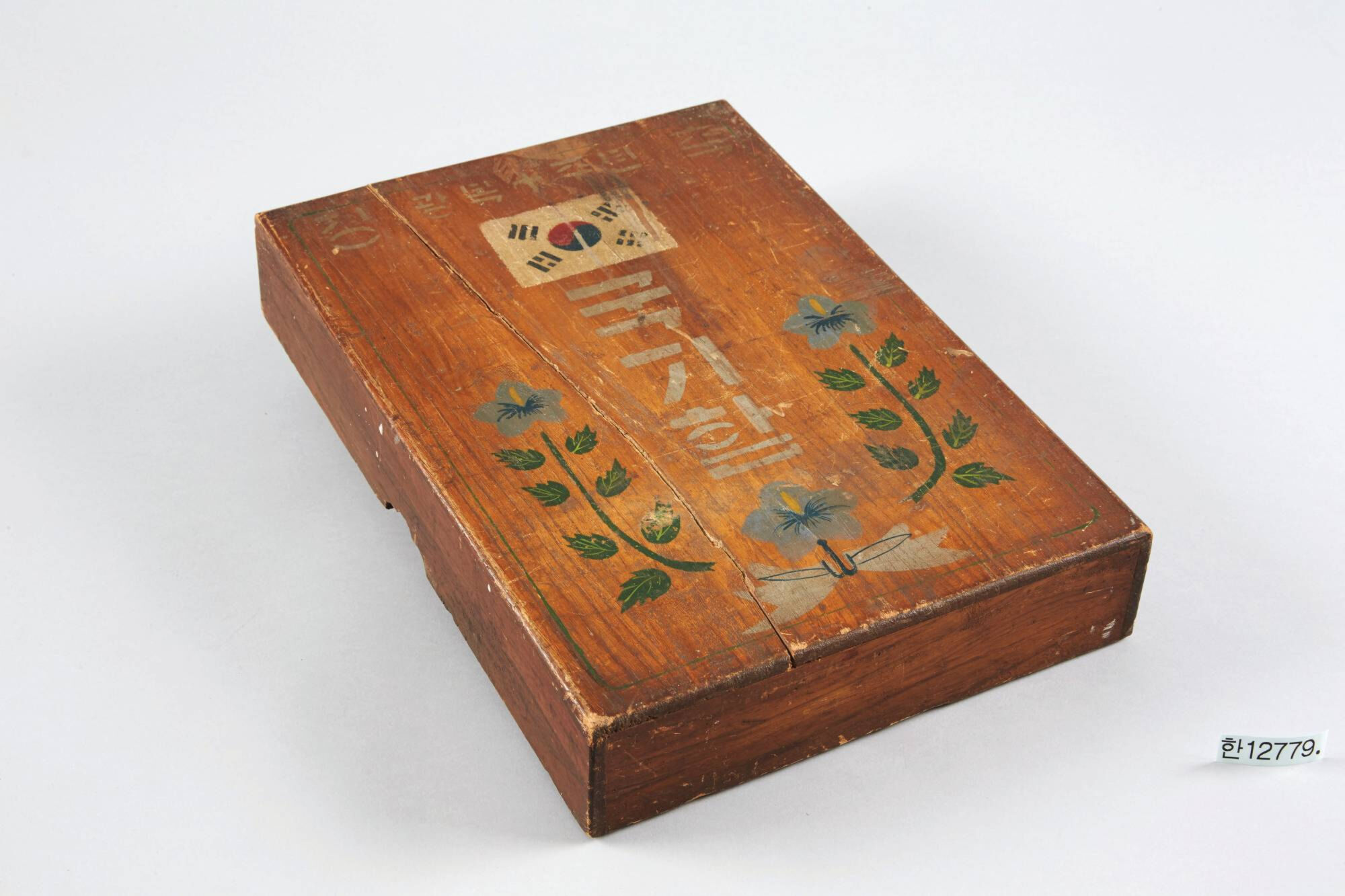 ▲ “Flag Box for the 10th Anniversary Celebration of Liberation,” Collection of the National Museum of Korean Contemporary History.
▲ “Flag Box for the 10th Anniversary Celebration of Liberation,” Collection of the National Museum of Korean Contemporary History.
When we gather all our small yet magnificent memories shared with the Taegeukgi, history reveals itself. In this exhibition, we have focused on the Taegeukgi as a bridge that unites us and on the collective memories and emotions it contains. One undeniable truth is that in all eras—past, present, and future—the Taegeukgi will always remain “our most precious Taegeukgi.” We invite you to reflect on the days shared with the Taegeukgi at the National Museum of Korean Contemporary History and recall the special day when you created your memories with the flag.
《Taegeukgi: The Days We've Shared Together》
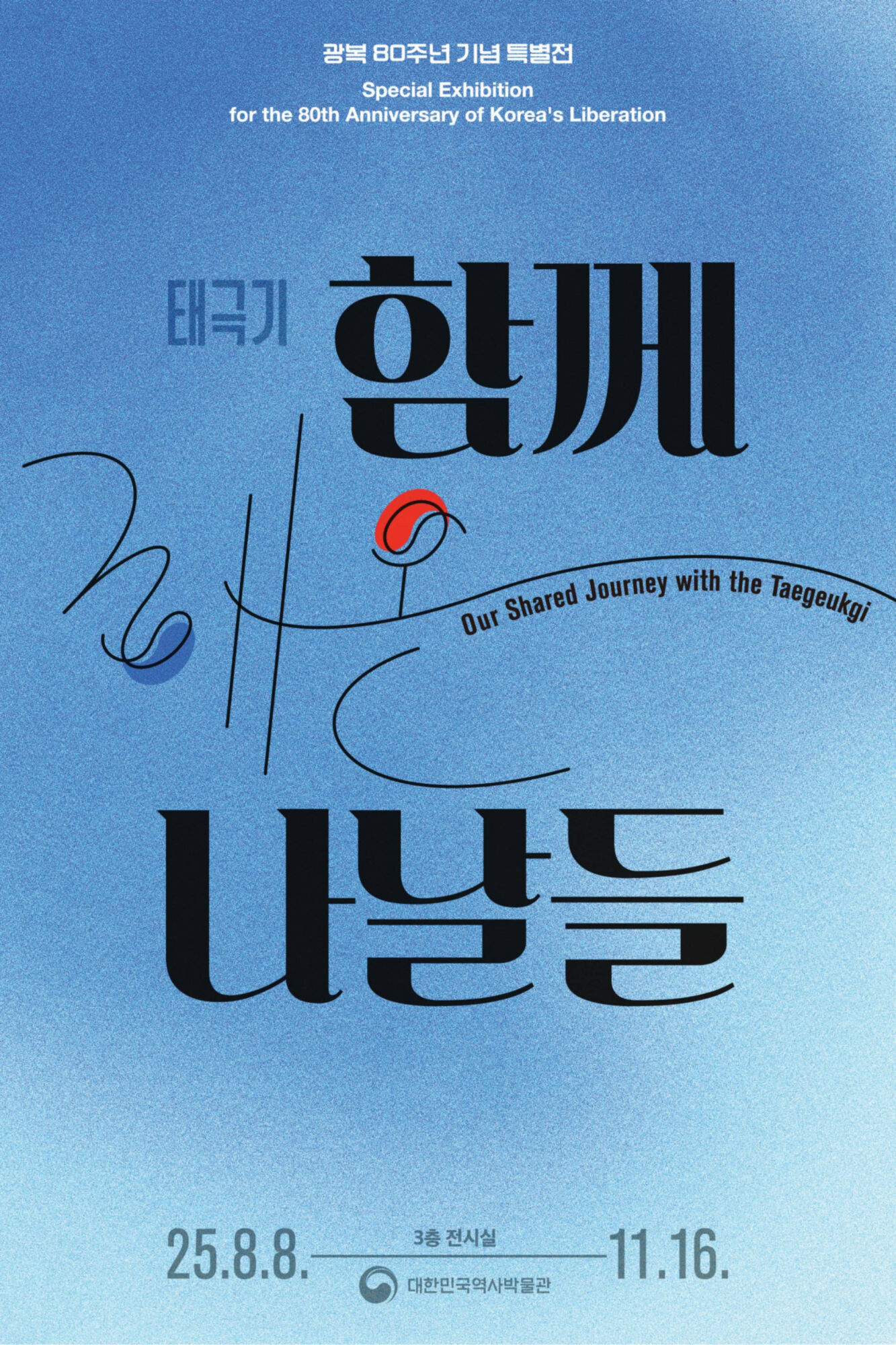
August 8 (Fri) – November 16 (Sun), 2025
Third Floor, National Museum of Korean Contemporary History
10:00~18:00 (Wednesdays and Saturdays 10:00–21:00)
━ An Exhibition in Comics ━
Daebak’s Today
《Taegeukgi: The Days We've Shared Together》,
A Special Exhibition Commemorating the 80th Anniversary of Liberation

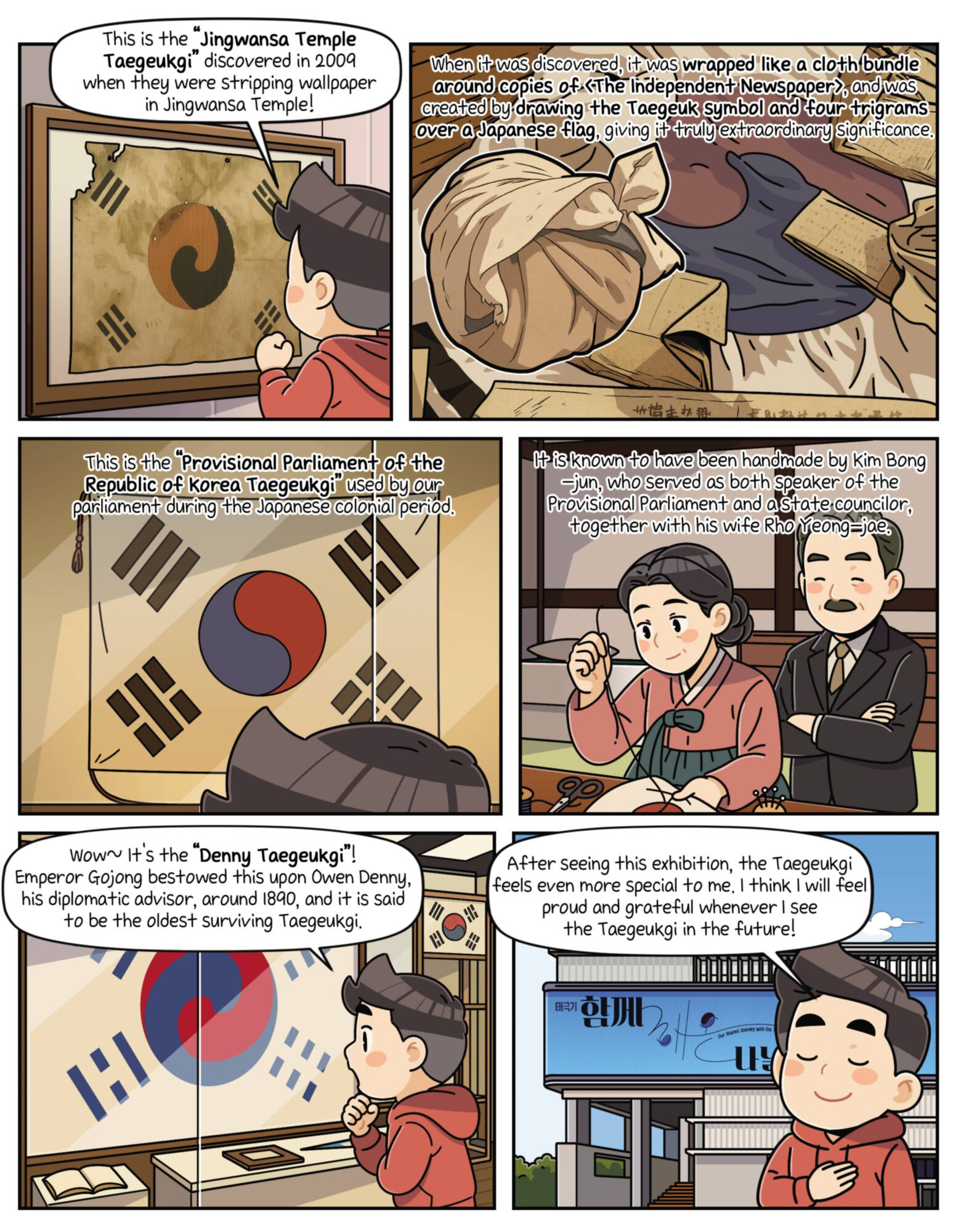
━ Spaces and Transformation ━
Enjoying Rest and Contemplation
New Landscapes at the Museum
The National Museum of Korean Contemporary History is establishing itself as more than simply a venue for exhibitions, but as an open space where visitors can stay, rest, and reflect. The recently unveiled Rooftop Garden, where you can experience leisure in daily life, and the Seosadam Contemporary History Library, where visitors can see, hear, and read materials on modern and contemporary history, are adding new depth to the museum's transformation. We introduce these two spaces that extend the resonance of exhibitions and expand experiences beyond them.
A Small Pause in the City Center: The Rooftop Garden
The rooftop garden, located on the eighth floor of the museum, is a special space designed to allow visitors to reflect on the lingering impressions of exhibitions in a natural setting. This space is more than just a place to rest, - It brings together history and nature, urbanity and leisure in harmony, and serves as a popular destination for museum visitors after they have viewed the exhibitions. Improvement construction was carried out from March to May to provide visitors with a more comfortable and aesthetically pleasing space. Careful attention was paid to details from landscape maintenance to redesigning visitor flow, and this space finally reopened on June 6 with a refreshed and more organized appearance. After climbing to the rooftop, visitors are greeted with refreshing, panoramic views encompassing Gwanghwamun, Gyeongbokgung Palace, Cheongwadae, and Bukaksan Mountain. Despite being situated in the heart of a bustling downtown area, a quiet and peaceful atmosphere pervades the moment you step into this space, as if you have stepped away from urban noise and daily routine. Brilliant flowers blooming in various colors each season, along with verdant grass, offer contemplative moments in nature that are rare in daily life. In particular, it is open at night until 9 p.m. every Wednesday and Saturday, offering a unique opportunity to appreciate the magnificent nighttime scenery of Gwanghwamun.
 ▲ The rooftop garden is both an urban rest space and a place to reflect on the flow of Korea's modern and contemporary history in nature.
▲ The rooftop garden is both an urban rest space and a place to reflect on the flow of Korea's modern and contemporary history in nature. A Treasury of Historical Knowledge: Seosadam
The Contemporary History Library on the first floor of the museum opened in August as a new type of integrated knowledge and cultural complex that combines the functions of a library, archive, and museum. Its name, “Seosadam Contemporary History Library” was selected after a week-long naming contest held on the National Museum of Korean Contemporary History's social media at the end of June. Seosadam means “a space containing stories(談, Dam) of history(史, Sa) within books (書, Seo)”. This space operates as a specialized information center for accessing various materials focused on Korea's modern and contemporary history. In this facility, visitors can go beyond encountering events, figures, and historical narratives from the museum's exhibition halls as mere fragmentary impressions to explore and deepen their knowledge and understanding more thoroughly. Rather than viewing and passing by exhibitions, this enables historical experiences that involve understanding, thinking, and making connections. Above all, it further strengthens the museum's educational role by providing systematic and diverse service functions such as information search systems and recommended resources linked to exhibitions. The Seosadam Contemporary History Library will be established as an open cultural space that preserves memory, expands knowledge, and breathes together with visitors.
 ▲ The Seosadam Contemporary History Library, an integrated knowledge and cultural complex space.
▲ The Seosadam Contemporary History Library, an integrated knowledge and cultural complex space.
━ Museum People ━
“We strive to create a clean and safe space.”
Stories from the National Museum of Korean Contemporary History's Custodial Staff

The National Museum of Korean Contemporary History is consistently maintained as a pleasant and safe space thanks to the unheralded efforts of its custodial staff, who quietly fulfill their roles behind the scenes. These dedicated individuals arrive earlier than anyone else each morning to inspect every corner of the exhibition halls. After visitors leave, they quietly erase traces and prepare for another day, so that the museum greets people with a pristine appearance every day. We now meet these true guardians who quietly yet steadfastly protect the values of the National Museum of Korean Contemporary History.
Q. Hello. Could you first introduce the custodial department?
Our custodial department includes a total of 11 people, including those participating in this interview, and each person is responsible for their assigned area by floor. Our most important role is to maintain the entire museum in a consistently pleasant and meticulous condition so that visitors can fully immerse themselves in the artifacts. In particular, we always pay careful attention near the exhibits to ensure that precious heritage items are not damaged or exposed to danger.
Q. We're curious about what a day at the museum is like.
We usually begin early in the morning before visitors arrive. Although the museum opens at 10 AM, we move to our assigned floors starting at 7 AM to thoroughly check the exhibition hall floors for dust or footprints, stains on glass cases, restroom hygiene conditions, and the cleanliness of common areas. After completing our morning duties, we take time for meals and a break, then conduct another comprehensive inspection of all spaces around 2 PM. We also work nights in alternating schedules with rotating shifts. During these hours, we erase the traces left by visitors after they have left and prepare for the next day.

Q. How does custodial work in a museum differ from that in ordinary buildings?
Unlike ordinary buildings, museums require much more delicate and careful attention because we're dealing with artifacts. Since this isn't simply a living space, what is special is that our entire custodial team works in a consistent and meticulous manner. We thoroughly clear floors of trash and dust so that visitor pathways are not obstructed, and we keep tactile blocks for the visually impaired clear to facilitate safe movement. We are also careful about choosing cleaning tools so we don't miss a single fingerprint on glass cases or a stain on walls. The restrooms are something we take particular pride in. With the mindset that they represent the museum's face, we frequently check for messy areas or slippery spots.
Q. What places would you recommend visitors see when they visit the museum?
Without question, the rooftop garden. It was temporarily closed for visitor environment improvements and reopened with a fresh look in June. It's a great place for taking photos, with incredible views overlooking the entire Gwanghwamun area and various flowers in bloom. There is also a slightly hidden wooden staircase on the left side of the museum's front entrance that leads to a place where you can sit and feel a gentle breeze, and it's perfect for taking a rest. Many people come here to rest briefly, not only in spring and fall but even during the sweltering summer heat. That is why we regularly check and maintain this space to keep it clean as well.
Q. When do you feel most rewarded while working?
When we hear warm words from visitors. Sometimes people will casually say as they pass by, “This place is spotless”, “I've never seen such a well-organized museum” or “Thanks to you, I enjoyed viewing the exhibition”. In those moments, my heart swells, and I think we should approach our work with even greater responsibility. Also, when rallies are held near the museum, participants sometimes share snacks or drinks they've brought while using the restrooms. Those small acts of consideration warm our hearts and move us. When even just one person acknowledges us, all the day's fatigue melts away, and that day feels more special.
Q. Finally, is there anything you hope for?
We want to continue this work with pride. We will do our best in our respective positions so that all visitors to the museum can return home with fond memories from a comfortable space. Every floor, wall, and staircase that we take care of with our hands ultimately becomes the path where visitors encounter modern and contemporary history.
“We will do our best so that all visitors to the museum can return home with good memories from a comfortable space. Every floor, wall, and staircase that we take care of with our hands ultimately becomes the path where visitors encounter modern and contemporary history.”
━ News from the National Museum of Korean Contemporary History ━
Vivid Records of the Korean War With Donated Materials, 75th Anniversary Special Exhibition 《Korean War Correspondent Jack James》

The National Museum of Korean Contemporary History held the special exhibition 《Korean War Correspondent Jack James》featuring donated materials from Jack James from June 19 to July 20, commemorating the 75th anniversary of the Korean War. Jack James(John E. Jack James) was a war correspondent for the UN and United Press who was among the first to report the outbreak of the Korean War, and continued his connection with Korea through activities with the Asia Foundation even after the armistice. This exhibition was made possible by donations from David James, Jack James's son. It featured more than 20 artifacts, including United Press bulletins containing the first reports of the Korean War, a medal and certificate from the prestigious American journalism award “National Headliner Award” received in 1951, and personal items used by Jack James, such as his passport, notebook, original articles, photographs, and jacket.
Press Conference for 《Korean War Correspondent Jack James》

On June 19 at 11:00 AM, a press conference was held with the directors of the National Museum of Korean Contemporary History and the Overseas Korean Cultural Heritage Foundation, who collaborated on the exhibition. In his opening remarks, Director Han Su said, “We hope this exhibition showcasing the activities of war correspondent Jack James, who was remarkably active on the battlefield, will serve as an opportunity to remember the historical significance of the Korean War and reflect on the value of solidarity between Korea and the United States, and indeed the world”. Chairperson Kim Jung-hee of the Overseas Korean Cultural Heritage Foundation expressed her ambition, saying that “Among Korean cultural heritage located overseas, there are many items related to Korea's modern and contemporary history, so we will continue to strive for the discovery and introduction of such materials”. This was followed by an exhibition tour guided by Curator Park Ju-young from the Collection Management Division.
80th Anniversary of Liberation Special Exhibition, 《Taegeukgi: The Days We’ve Shared Together》 Opens

To commemorate the 80th anniversary of liberation, the National Museum of Korean Contemporary History presents the special exhibition 《Taegeukgi: The Days We’ve Shared Together》 from August 8 through November 16. This year's largest-scale exhibition focuses on the Taegeukgi, which is our nation's symbol and has accompanied us through moments of joy and sorrow, suffering, and triumph. A press conference will also be held before the opening ceremony.
Academic Conference on the 80th Anniversary of Liberation, Cities, Memories of August 15th

In commemoration of the 80th anniversary of liberation, the National Museum of Korean Contemporary History is hosting the academic conference “Cities, Memories of August 15th” on August 8 from 9:30 AM to 4:30 PM in Conference Rooms 1 and 2 on the sixth floor of the museum. This academic conference will examine the transformation patterns of cities such as Seoul, Incheon, and Ulsan before and after liberation, as well as the lifestyle of urban residents, through records and memories. It seeks to explore post-liberation urban landscapes from multiple perspectives, including the changes experienced by cities and their residents after liberation and the continuity that has led to present-day cities.
An Archive to Experience the Lives of People from That Era, Liberation Archive ‘The Year 1945’ Released


To commemorate 80 years of liberation, the National Museum of Korean Contemporary History will release the online archive ‘The Year 1945’, which illuminates the special significance that the year 1945 holds for Koreans, with a variety of materials. This archive features more than 500 museum collection items that capture the flow of events in 1945, a year marked by historic turning points, from January to December. The materials are organized into four major themes, nine storytelling narratives, and a timeline to provide a multidimensional view of the modern historical context. With the rich materials and stories in the archive, visitors can revisit the scene of liberation 80 years ago and empathize with the lives of people from that era. It will be available around Liberation Day at the National Museum of Korean Contemporary History website ⇨ Modern and Contemporary History Archive ⇨ Web Content.
A Moving Stage Embodying the Meaning of Liberation, the 80th Anniversary of Liberation National Chorus Performance

To mark the 80th anniversary of Liberation Day, the National Museum of Korean Contemporary History is presenting the performance “Songs of Liberation, Beautiful Korea” on August 15 at 3:00 PM. The National Chorus of Korea will perform beautiful Korean art songs and representative pieces from the musicals Hero and Les Misérables. The performance is open to all without prior reservation.
Korea's Modern and Contemporary History Through Daily Life and Art, the Second and Third Modern and Contemporary History Colloquiums

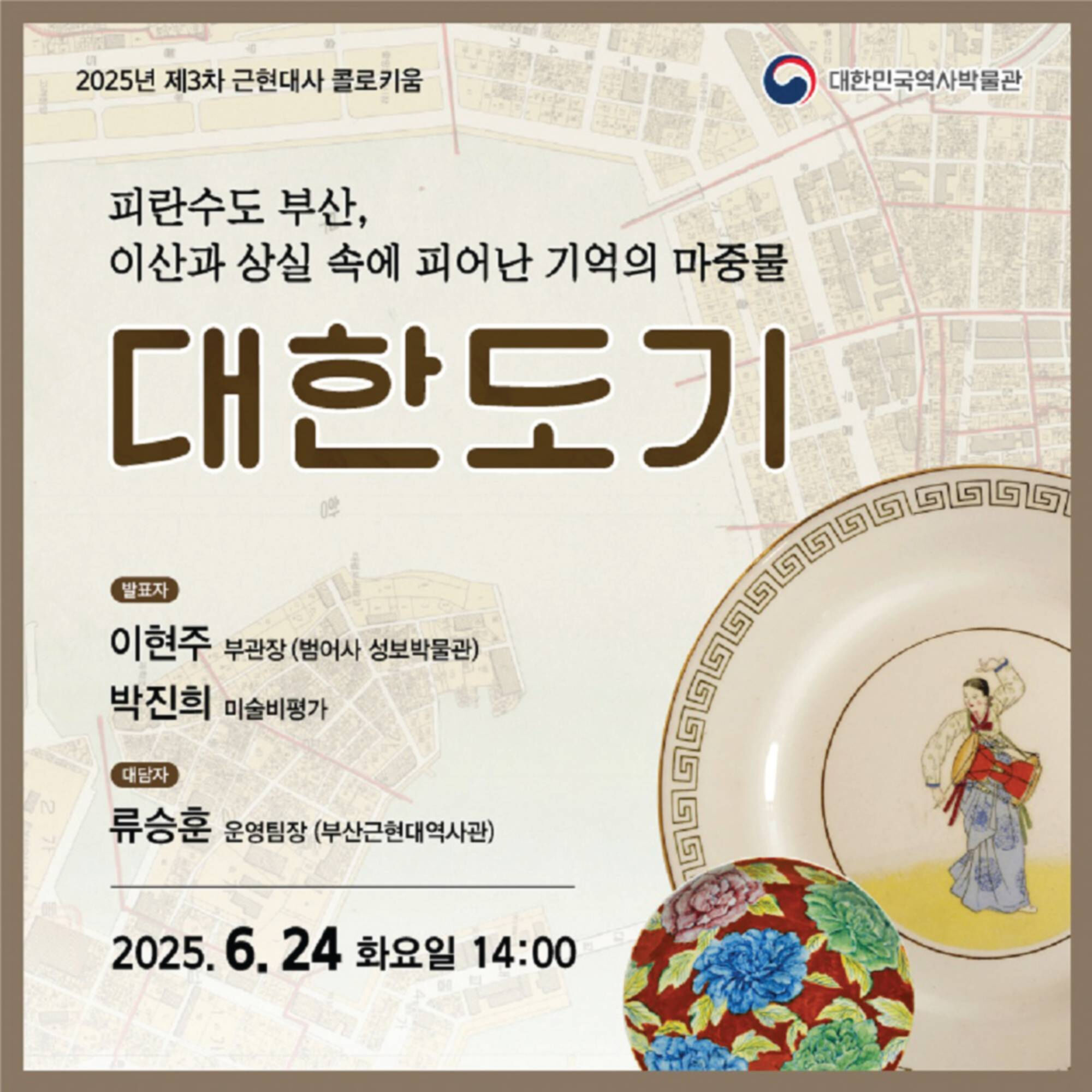
The National Museum of Korean Contemporary History held the second Modern and Contemporary History Colloquium, ‘Our Modern Daily Life Through 'Meongteongguri'’ on May 21. This event featured presentations by Professor Jeon Bong-gwan and Professor Kim Byeong-jun that focused on the newspaper comic strip ‘Meongteongguri’ from the 1920s and 1930s. Subsequently, on June 24, the third colloquium, ‘Refugee Capital Busan: 'Daehan Pottery' as a Wellspring of Memory Blooming Amid Separation and Loss’ was conducted. ‘Daehan Pottery’ refers to ceramics created by artists active in Busan during the Korean War period, through which modern and contemporary art, as well as industrial history, were examined. Both colloquia provided opportunities to reexamine Korea's modern and contemporary daily life and art from various perspectives.
From the Independence Movement to Becoming the Republic of Korea, a Special Lecture by Liberation Association Chairman Lee Jong-chan
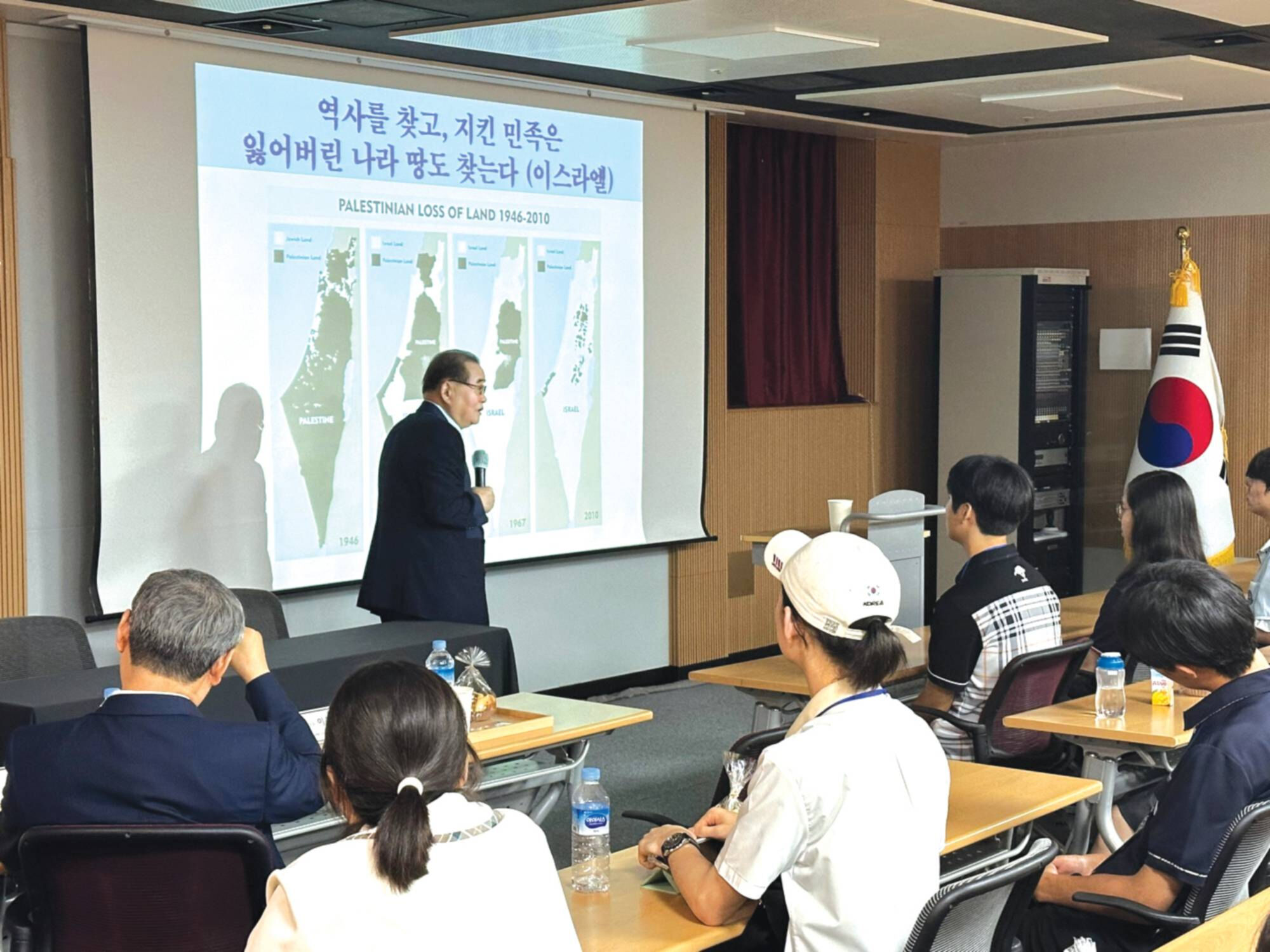
The “80th Anniversary of Liberation Distinguished Speaker Series” hosted by the Seoul Metropolitan Office of Education was held at the National Museum of Korean Contemporary History on July 22 from 2 to 4 PM. This meaningful event featured Liberation Association Chairman Lee Jong-chan, grandson of independence activist Lee Hoe-young, speaking about the independence movement and the legitimacy of the Republic of Korea as a descendant of independence activists. The special lecture was conducted for approximately 50 high school students.
An In-Depth Focus on Urban Changes and Citizens' Lives After Liberation, Talk Concert ‘Modern Urban Chronicles’

The National Museum of Korean Contemporary History hosted the Talk Concert ‘Modern Urban Chronicles’ three times, on the last Friday of each month, starting from May 30. The first talk concert, the “Busan Edition,” examined Busan's appearance immediately after liberation with the theme “Liberation and Busan Port.” The second talk concert on June 27, the “Daejeon-Daegu Edition,” explored changes in these two cities after liberation with the theme “Railways and Food Supply.” The final talk concert on July 30, titled the “Pyongyang-Gaeseong Edition,” examined the structural and demographic changes in Pyongyang and Gaeseong, two representative cities of North Korea, after liberation. Each event featured regional history experts who discussed urban history and the lives of citizens and provided a vivid account of modern urban changes and social conditions after liberation.
Newly Illuminating the Life of Lim Myeon-su and the Overseas Independence Movement History, Book Concert for Pildong Lim Myeon-su Biography

The National Museum of Korean Contemporary History, together with the Association for Historical Studies on Korean National Movement, held a book concert for “Pildong Lim Myeon-su Biography”(author: Park Hwan, chairperson of the Korea Academic Cultural Foundation) on June 23. This event, marking the 80th anniversary of liberation and the 120th anniversary of Korean immigration to Mexico, featured an author's lecture introducing the life and activities of Lim Myeon-su, who had not been highlighted in the history of the independence movement, followed by a dialogue with Professor Jo Gyu-tae of Hansung University.
Sites of Public History and History Education Outside Schools, Museum Education and Public History Forum
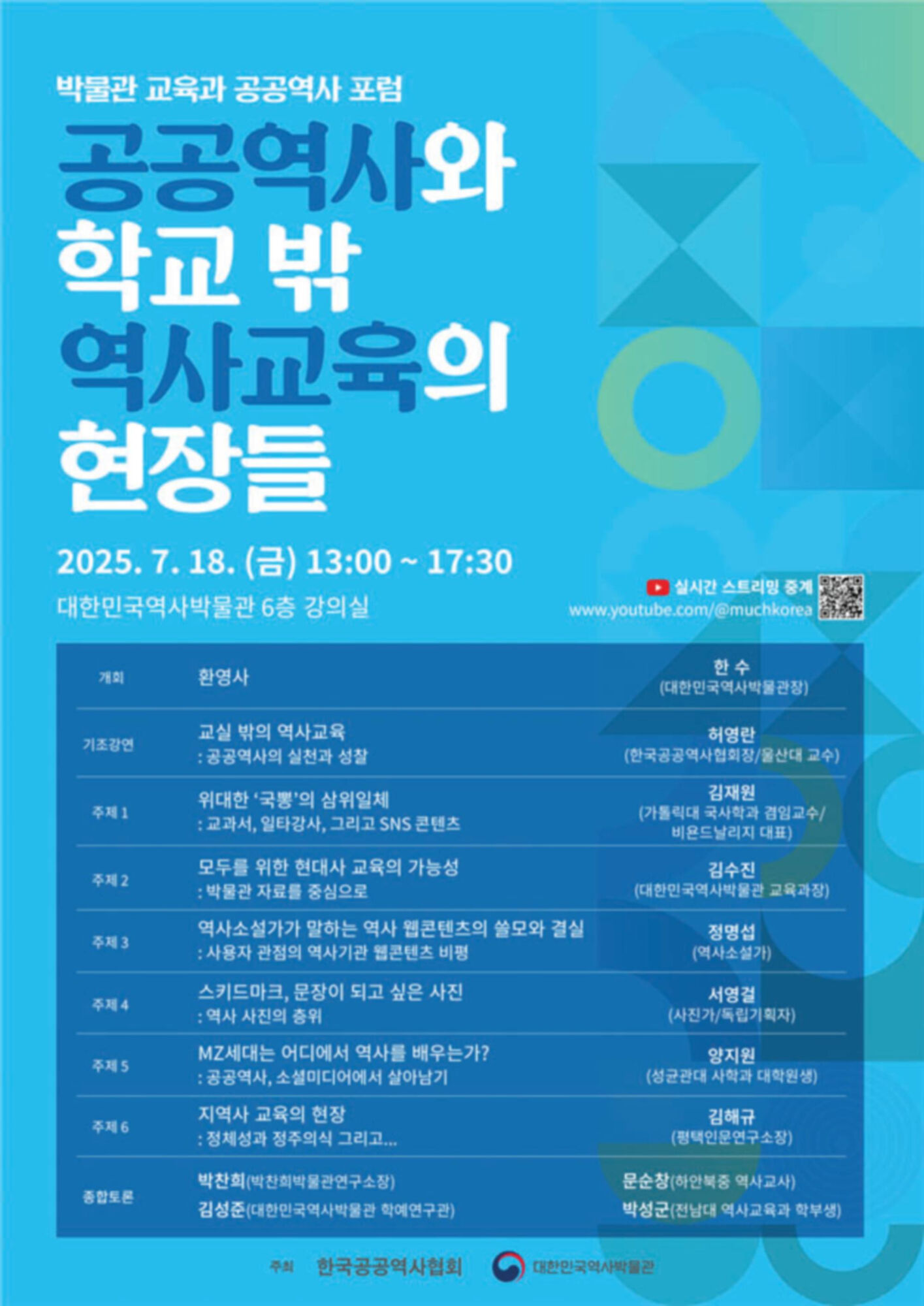
The National Museum of Korean Contemporary History held a joint forum with the Korean Association for Public History on July 18 titled “Sites of Public History and History Education Outside Schools”. This forum was organized to examine various cases of history education activities taking place outside schools and to discuss issues and challenges in history education from a public history perspective. Experts from various fields, including historians, YouTubers, museum curators, photographers, and novelists, participated as presenters and covered a broad range of topics, such as the public nature of museum materials, the status of web content, the evaluation of exhibition photography, and cases of history education through personal media. The forum was livestreamed on the museum's official YouTube channel so that the content could be shared with a wide audience.
Creativity for the Homeland: Stories of Independence Merit Inventors, Korean Intellectual Property Office Exhibition ‘Independence and Invention’
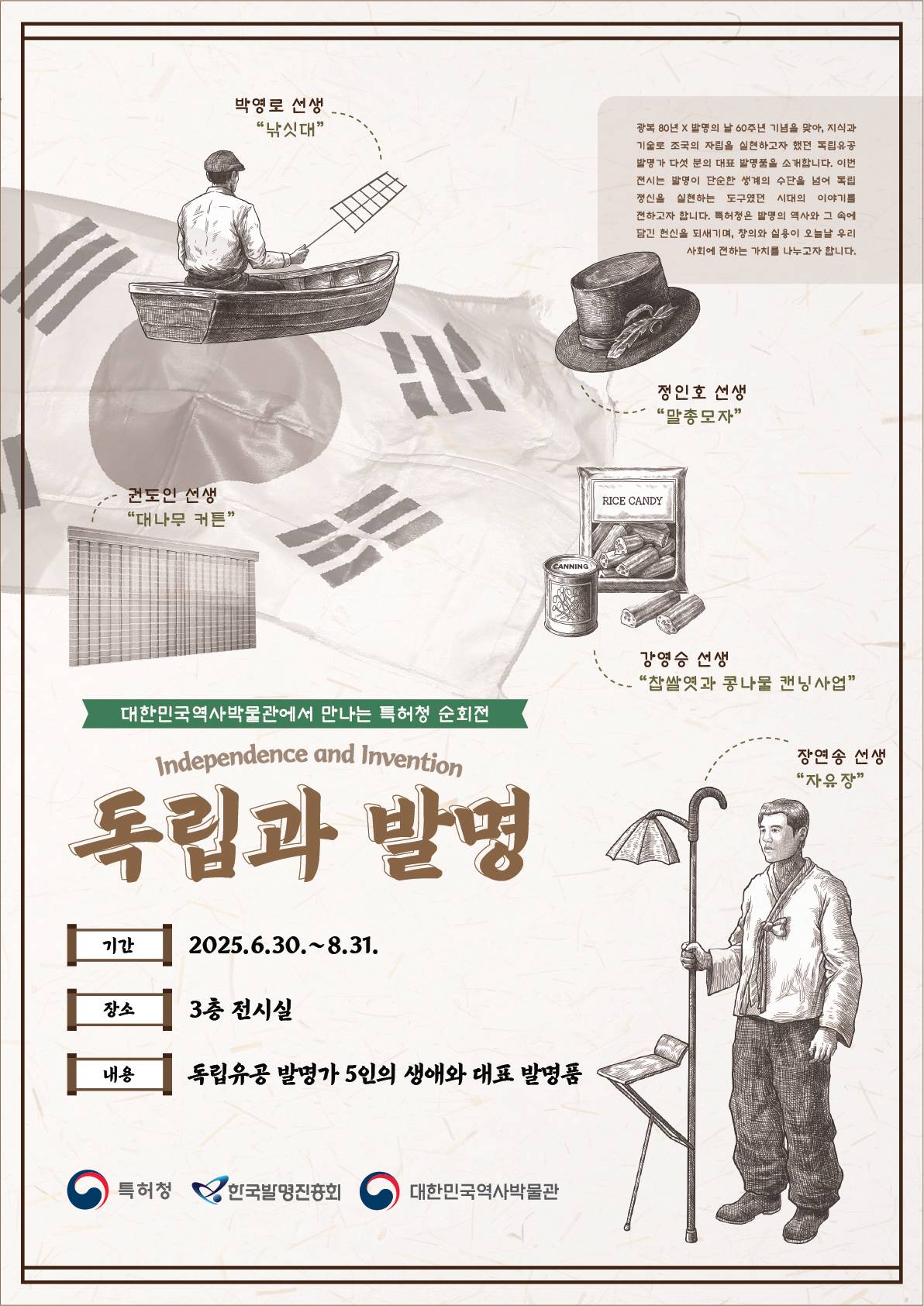
The special exhibition ‘Independence and Invention’, jointly hosted by the National Museum of Korean Contemporary History and the Korean Intellectual Property Office, runs from June 30 to August 31 on the third floor of the museum. This exhibition commemorating the 80th anniversary of liberation and the 60th anniversary of Invention Day spotlights five independence merit inventors who dreamed of and worked toward their homeland’s independence through invention, and introduces their achievements and representative inventions.
Opening of Cafe 'I Got Everything'

Cafe “I Got Everything” opened with a ceremony on August 8 in the outdoor terrace space on the third floor of the museum and began operations. I Got Everything is a cafe brand that employs people with severe disabilities launched by the Korean Disabled People's Development Institute to provide stable employment opportunities for individuals with severe disabilities. The National Museum of Korean Contemporary History branch is operated under the auspices of the Korea Developmental Disabilities Culture and Arts Association, Art WeCan. In addition to refreshments, the cafe will also sell cultural products featuring works by artists with severe disabilities.
Rooftop Garden Improvements and Creation of First Floor Seosadam Contemporary History Library and Archive


The National Museum of Korean Contemporary History has been creating a comfortable and convenient visitor environment with various facility improvements since the beginning of this year. First, the landscaping of the rooftop garden was renovated, and there are plans to install additional facilities for visitor rest in the future. The first floor space was entirely redesigned, and the existing rest area(former children's museum) was transformed into the newly created Seosadam Contemporary History Library. The name “Seosadam” was selected in a contest on the museum's social media(Instagram) and has the meaning of a space where people can share books(書), history(史), and stories(談). In addition, the nursing room, emergency waiting room, and lockers were also transformed into more comfortable areas.
Expanding Multilateral Cooperation to Strengthen Historical Expertise: The National Museum of Korean Contemporary History Signs MOUs with the Tourism Sciences Society of Korea, the Association for Historical Studies on Korean National Movement, and the Incheon National Maritime Museum
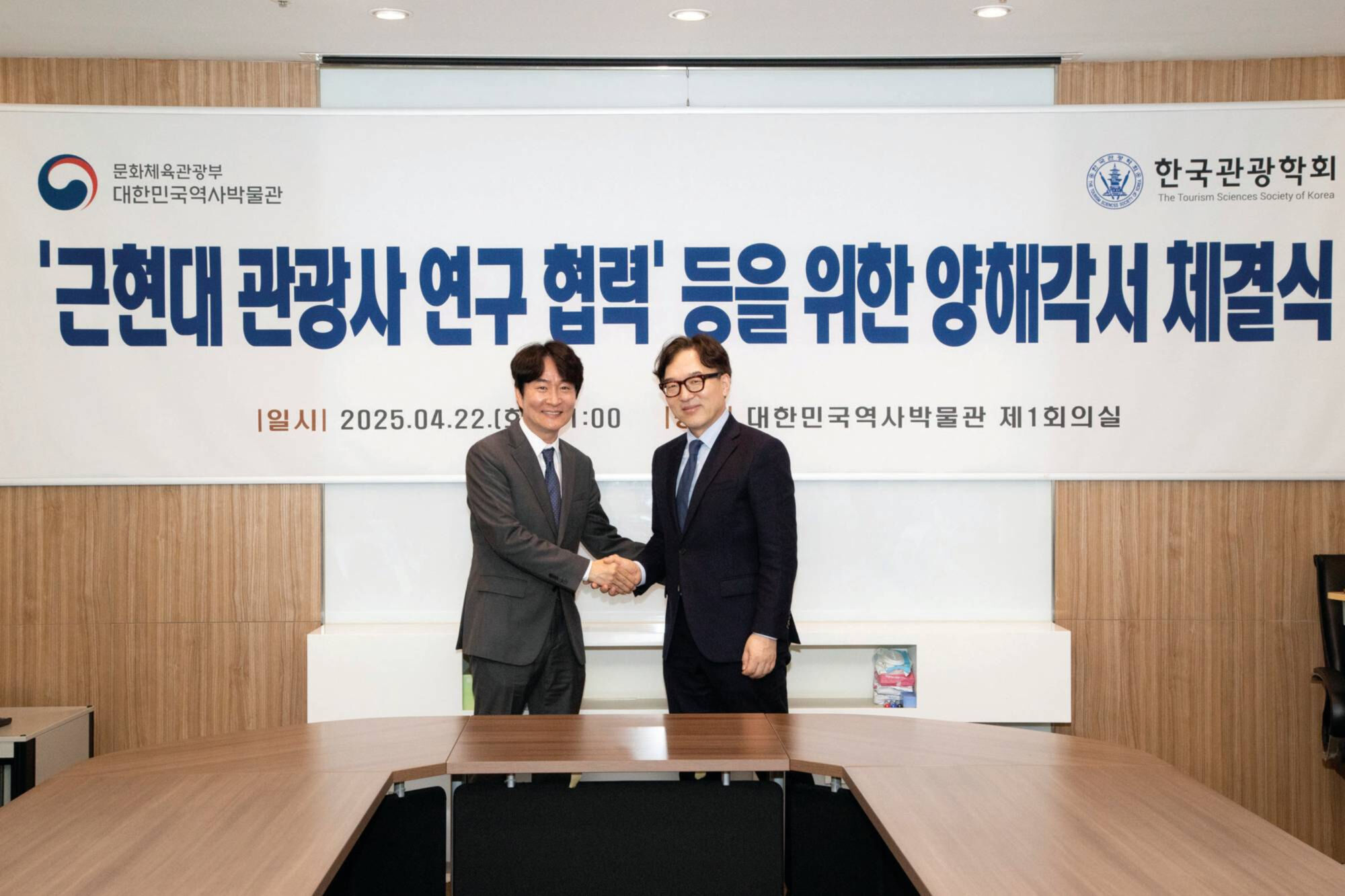

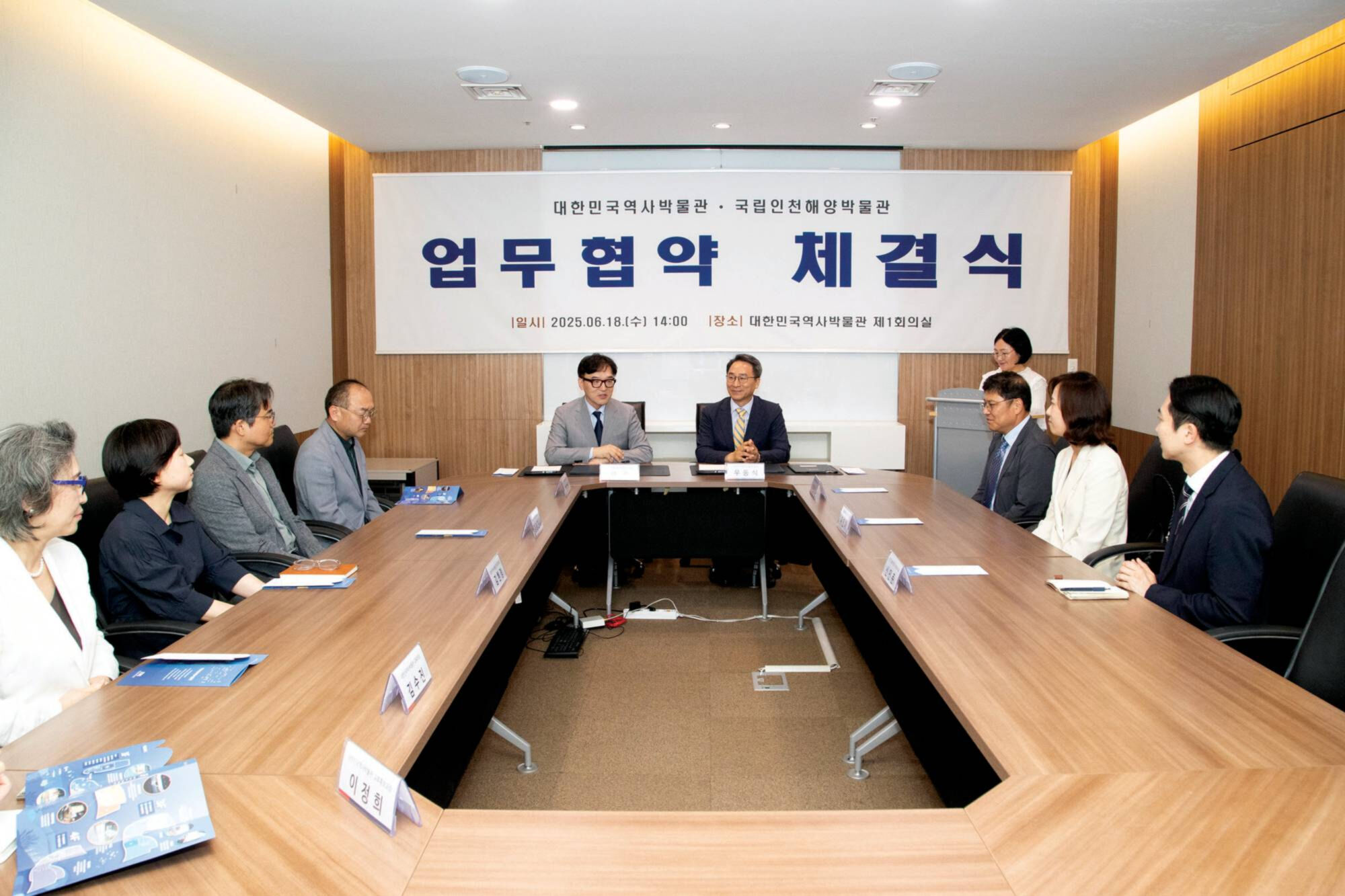
The National Museum of Korean Contemporary History has signed agreements with the Tourism Sciences Society of Korea, the Association for Historical Studies on Korean National Movement, and the National Maritime Museum of Korea to expand research and academic exchange in modern and contemporary history. On April 22, it signed a business agreement with the Tourism Sciences Society of Korea for cooperation in modern and contemporary tourism culture research; on May 30, a business agreement was signed with the Association for Historical Studies on Korean National Movement to vitalize academic exchange; and on June 18, a business agreement was signed with the Incheon National Maritime Museum for maritime history research cooperation. Through collaboration with these three institutions, the museum plans to strengthen the sharing of related materials and joint research while working to increase historical awareness.
History Education Cooperation and Mutual Exchange Plans Discussed with The National Museum of Korean Contemporary History and European Association of History Educators Working Meeting
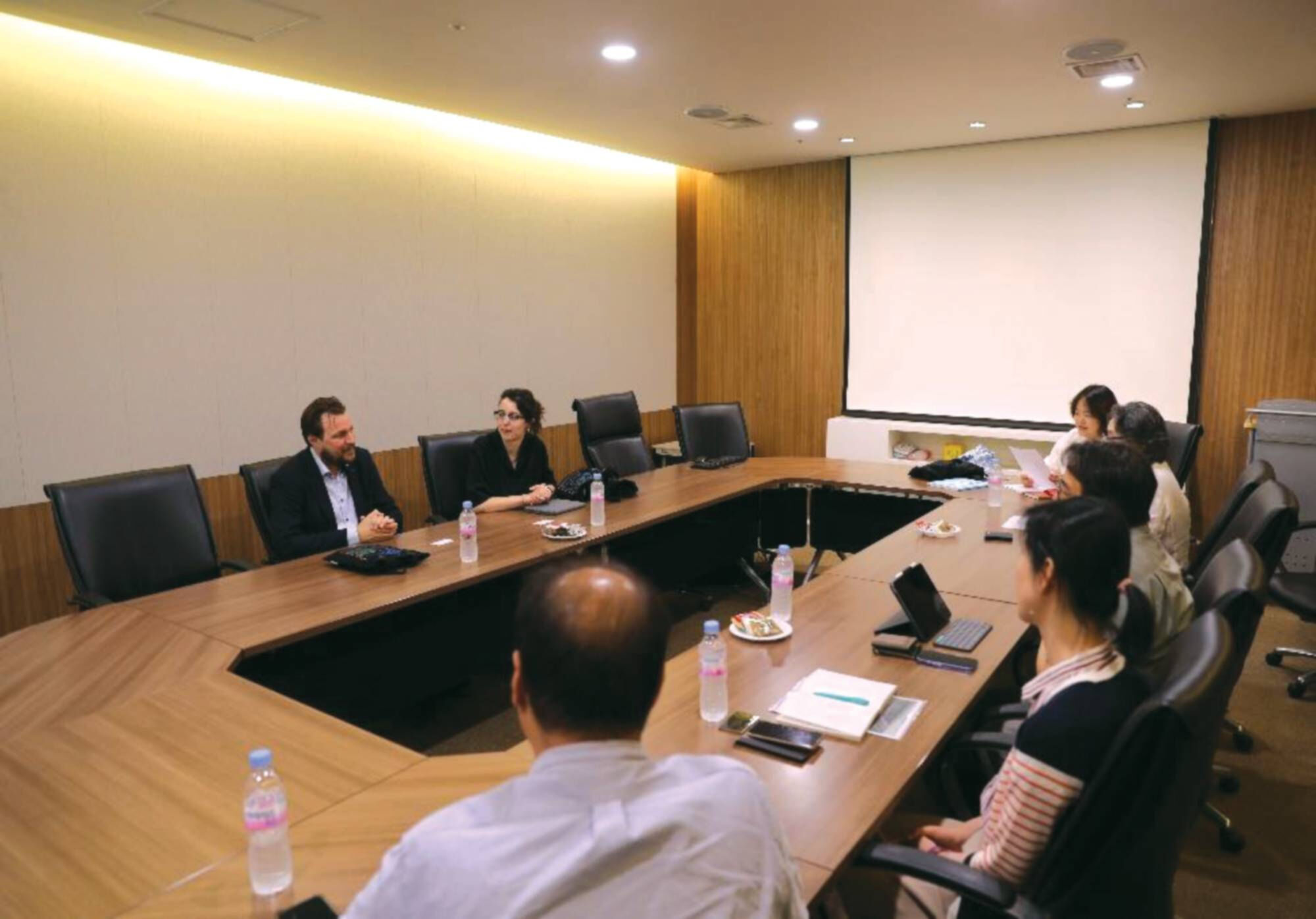
On July 11, Secretary-General Steven Stegers of the European Association of History Educators(EuroClio), and Project Manager Paula O'Donohoe, visited the National Museum of Korean Contemporary History. EuroClio is a private organization that practices reflective theory and new history education methodologies, and the National Museum of Korean Contemporary History joined in 2018. This visit provided an opportunity for the museum to resume exchanges that had been suspended due to the COVID-19 pandemic and to strengthen cooperation. The association expressed hope that the National Museum of Korean Contemporary History would actively participate as Korea's contemporary history museum in the annual conference to be held at the House of European History in Brussels, Belgium, in 2026.




